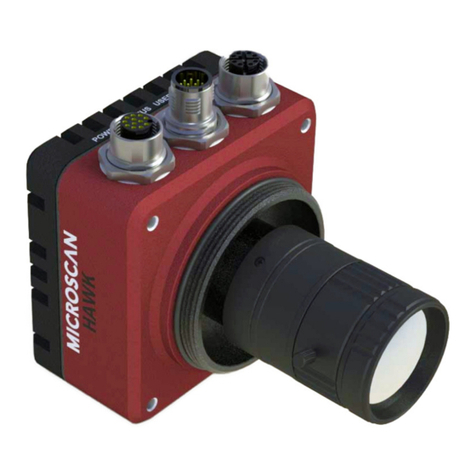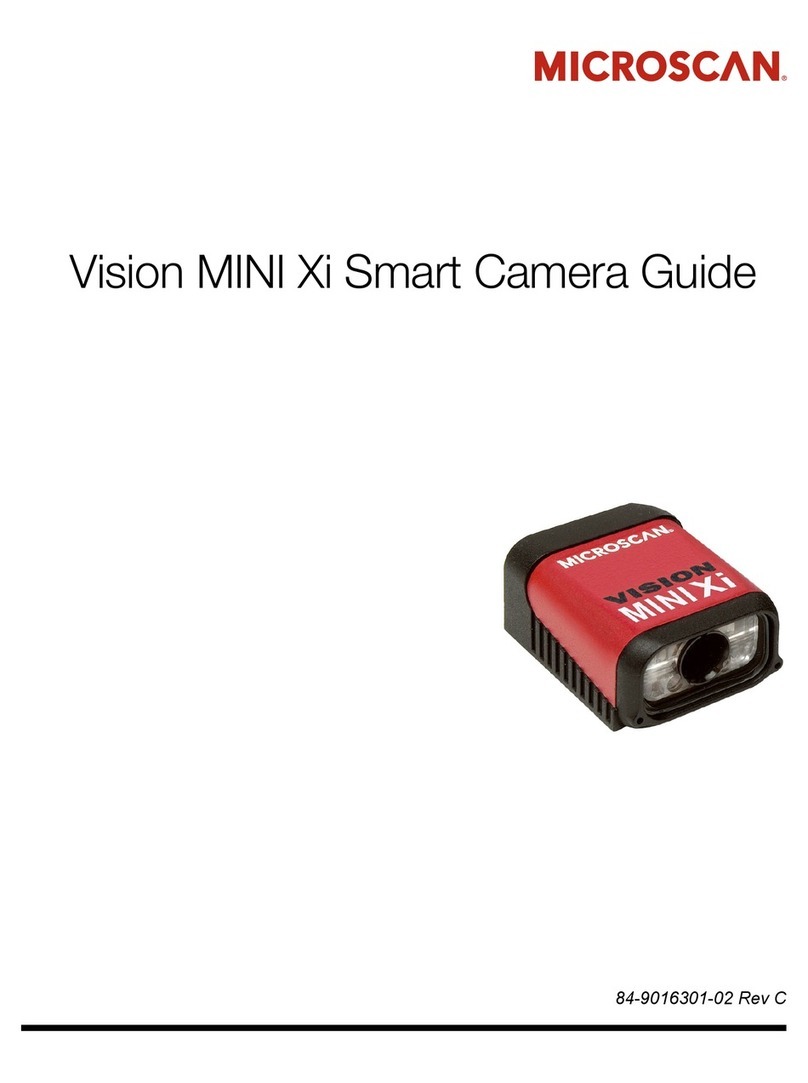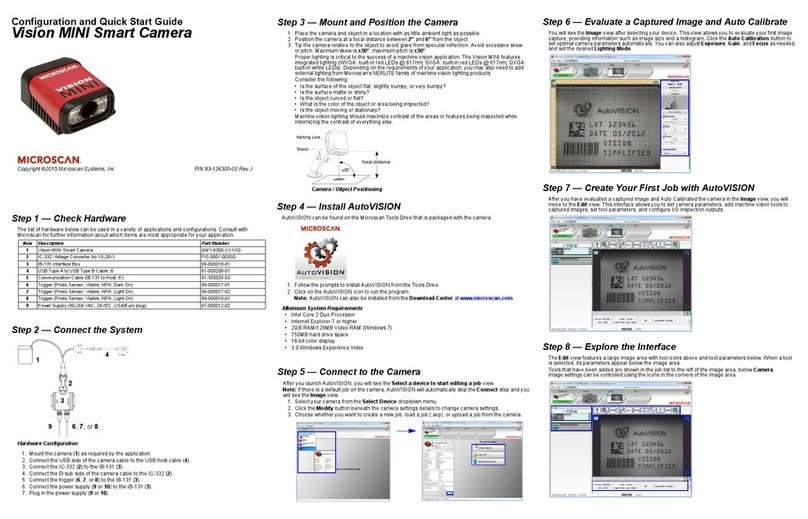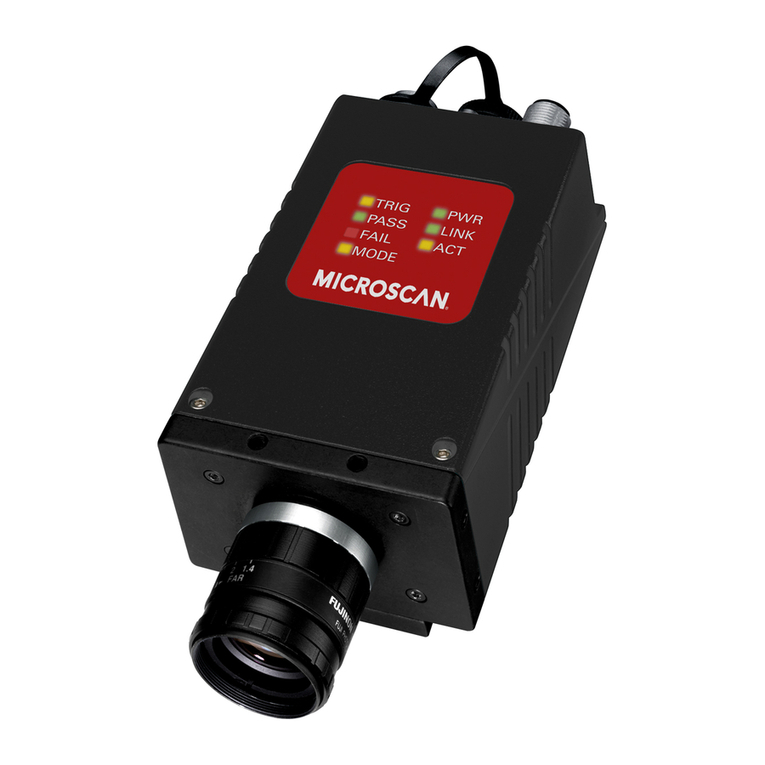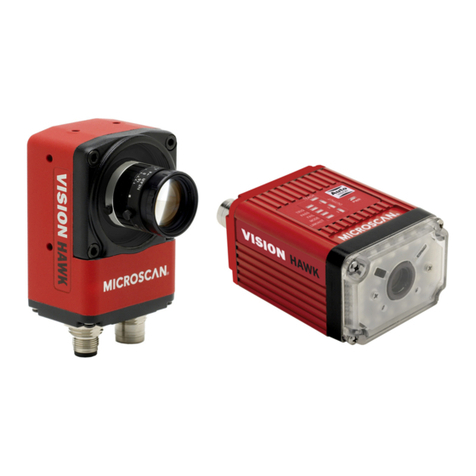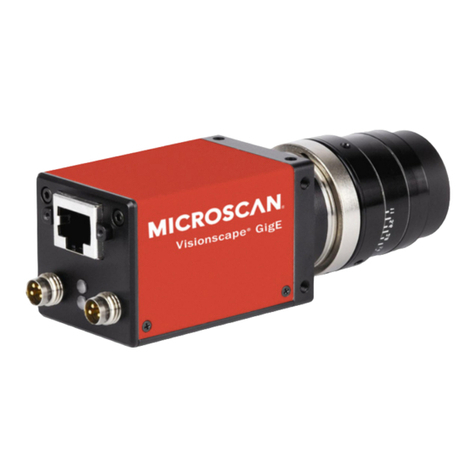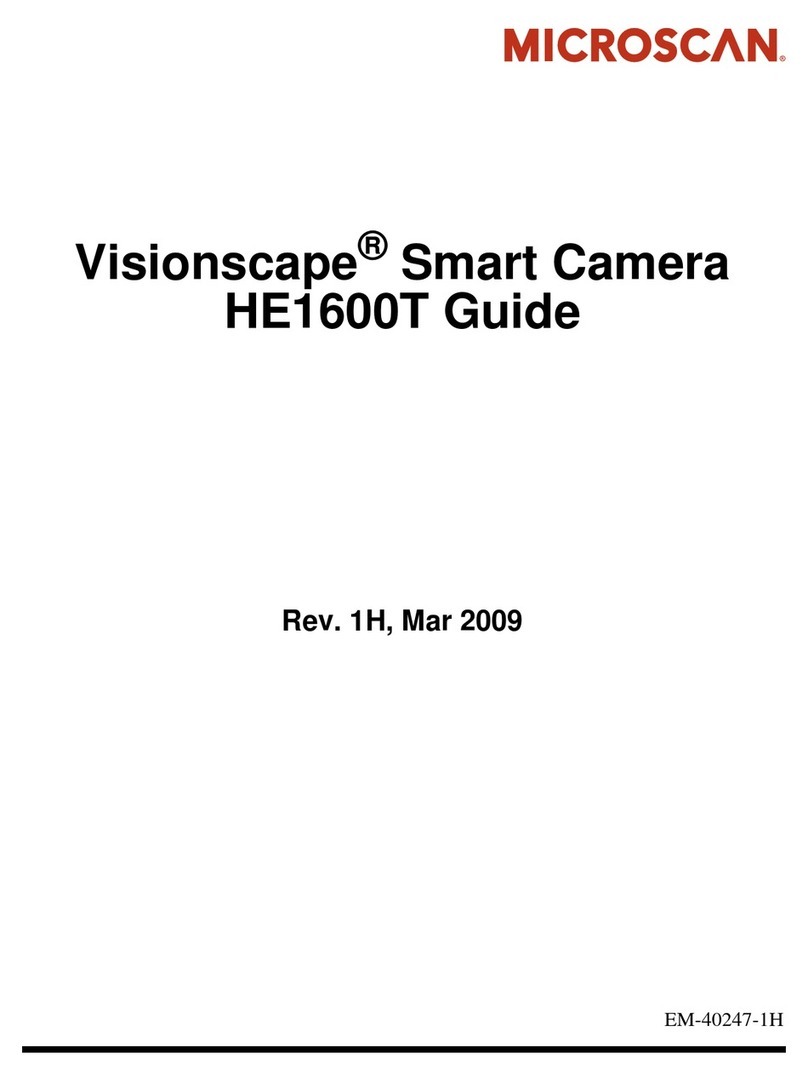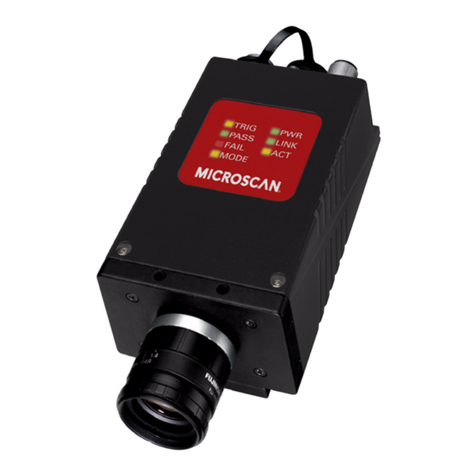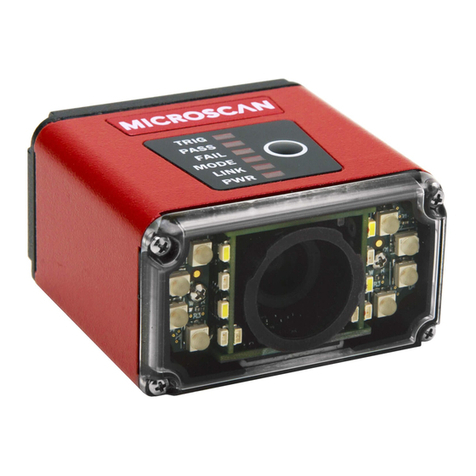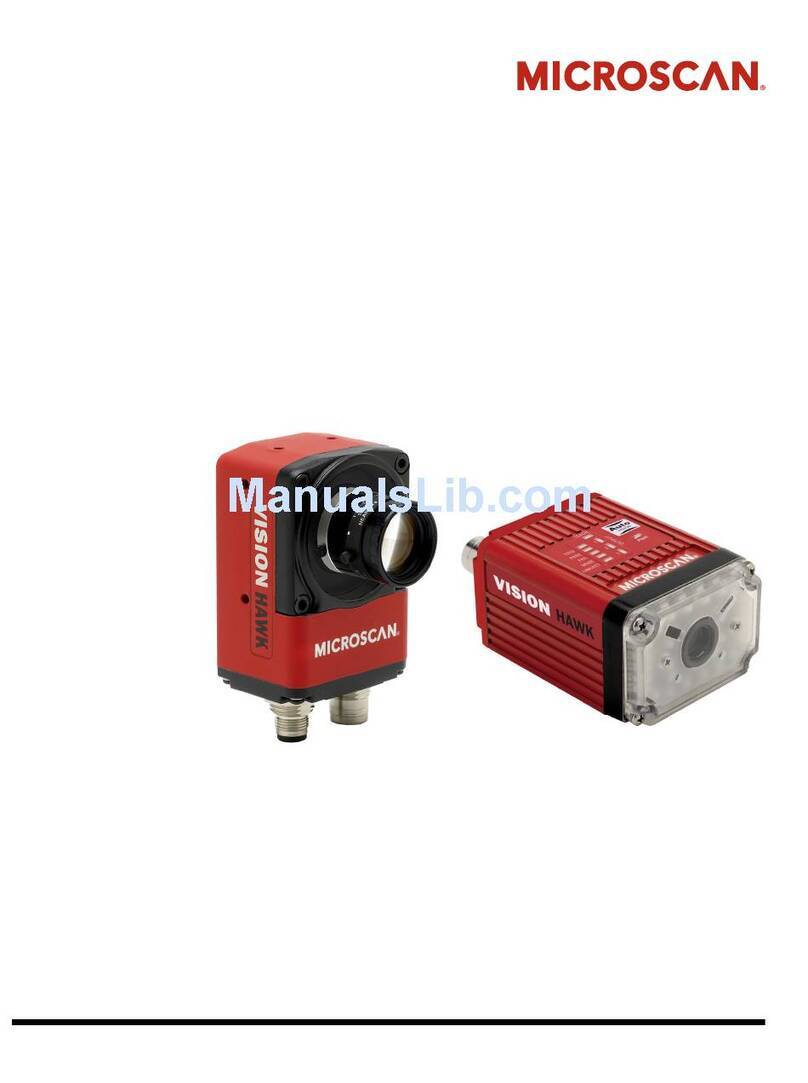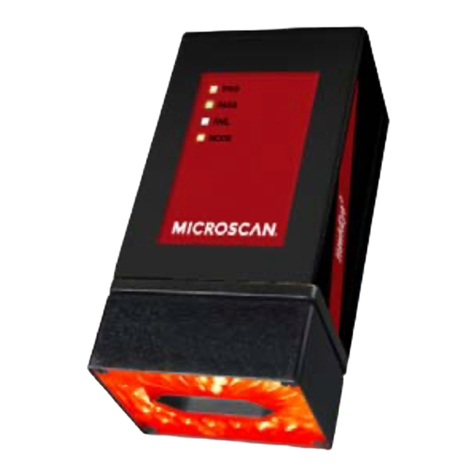
Chapter 1Introduction
1-2 Visionscape GigE Camera Guide v4.1, November 2011
Product Summary
Microscan GigE cameras are a range of cameras that are designed to
perform the imaging and image transmission functions in a Visionscape
PC based machine vision system that uses the GigE Vision standard for
image transfer.
The combination of Microscan GigE cameras and the Visionscape
software allows the development of cost-effective, easily-deployed
solutions for quality control, guidance or part identification.
Visionscape software, which offers an extensive array of built-in vision
processing tools, including Data Matrix and bar code reading, optical
character recognition (OCR), image processing, image analysis, and
feature extraction, flaw detection, object location, calibrated dimensional
measurements, and various custom processing options. Developed and
perfected on prior generations of machine vision systems, these tools
have already been successfully applied in thousands of production
installations worldwide.
Setup of a new vision application employing Microscan GigE camers is
performed on a host PC using the same powerful graphical application
environment as the rest of the Visionscape line. The patented
Visionscape step program architecture allows transfer of a vision
application program between systems using GigE Cameras and those
using the VS-1 Smart Camera, leveraging the end-user’s investment in
application development and training.
The Microscan GigE camera range includes cameras with resolutions
that range from VGA to QXGA. The range includes cameras with CMOS
and CCD sensors as well as cameras with color output capability.
All Microscan GigE cameras support C-mount lenses. The significant
features of the cameras physical configuration are as follows:
• Square camera body cross section with mounting points on all four
sides allows flexible mounting
• All cameras are supplied with an attached mounting bracket with ¼ -
20 thread
• Network connection with jack screws for positive cable retention
• Strobe/Trigger connection for direct trigger and strobe output
